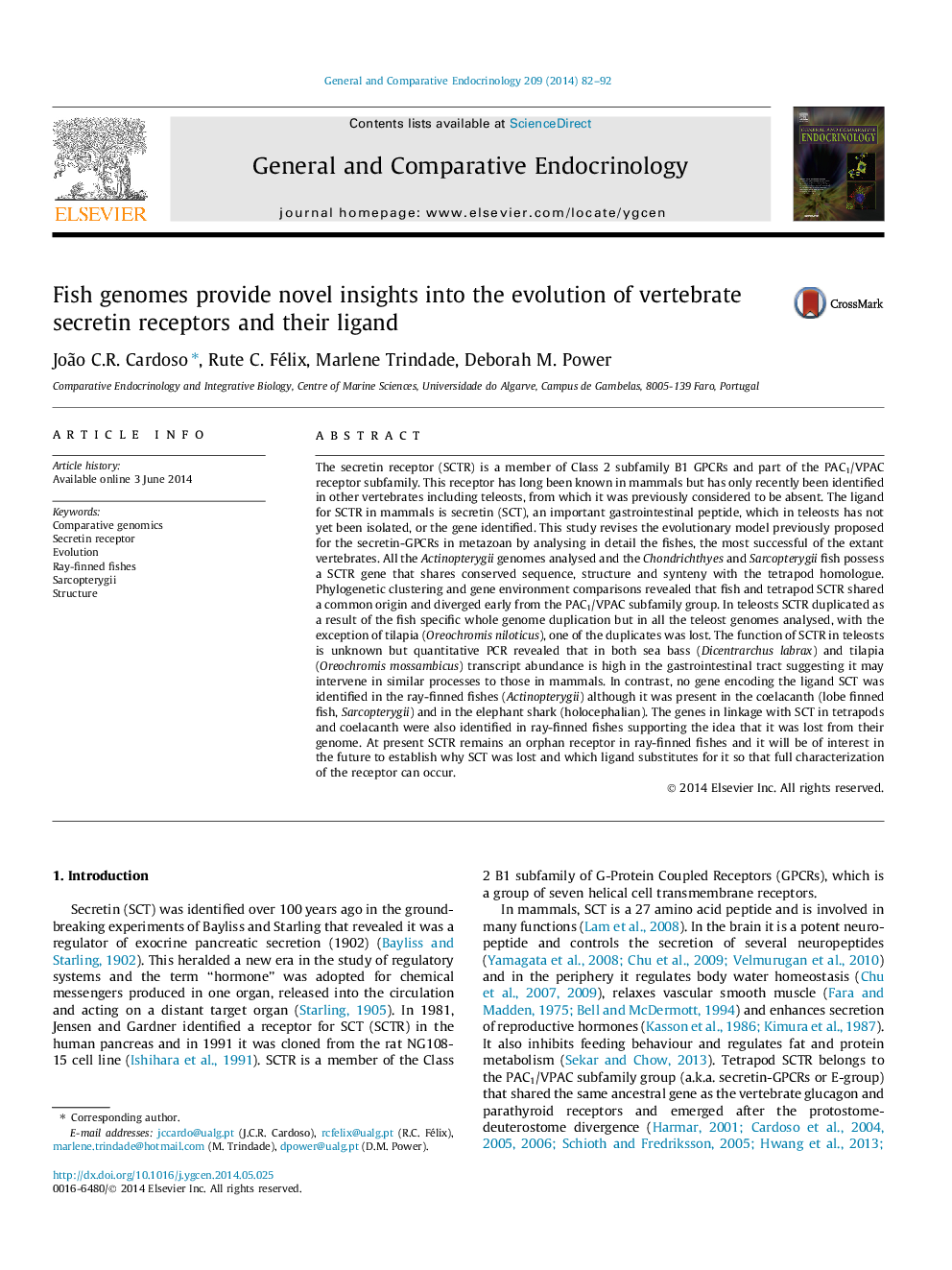| کد مقاله | کد نشریه | سال انتشار | مقاله انگلیسی | نسخه تمام متن |
|---|---|---|---|---|
| 2800080 | 1568896 | 2014 | 11 صفحه PDF | دانلود رایگان |
• SCTR a newly identified member of the Class 2 B1 GPCR family in ray-finned fish.
• Fish SCTR shares conserved sequence and gene environment with the tetrapod gene.
• SCTR is an orphan receptor in ray-finned fishes.
• SCT exists in holocephalian and lobe-finned fishes but was lost in ray-finned fishes.
The secretin receptor (SCTR) is a member of Class 2 subfamily B1 GPCRs and part of the PAC1/VPAC receptor subfamily. This receptor has long been known in mammals but has only recently been identified in other vertebrates including teleosts, from which it was previously considered to be absent. The ligand for SCTR in mammals is secretin (SCT), an important gastrointestinal peptide, which in teleosts has not yet been isolated, or the gene identified. This study revises the evolutionary model previously proposed for the secretin-GPCRs in metazoan by analysing in detail the fishes, the most successful of the extant vertebrates. All the Actinopterygii genomes analysed and the Chondrichthyes and Sarcopterygii fish possess a SCTR gene that shares conserved sequence, structure and synteny with the tetrapod homologue. Phylogenetic clustering and gene environment comparisons revealed that fish and tetrapod SCTR shared a common origin and diverged early from the PAC1/VPAC subfamily group. In teleosts SCTR duplicated as a result of the fish specific whole genome duplication but in all the teleost genomes analysed, with the exception of tilapia (Oreochromis niloticus), one of the duplicates was lost. The function of SCTR in teleosts is unknown but quantitative PCR revealed that in both sea bass (Dicentrarchus labrax) and tilapia (Oreochromis mossambicus) transcript abundance is high in the gastrointestinal tract suggesting it may intervene in similar processes to those in mammals. In contrast, no gene encoding the ligand SCT was identified in the ray-finned fishes (Actinopterygii) although it was present in the coelacanth (lobe finned fish, Sarcopterygii) and in the elephant shark (holocephalian). The genes in linkage with SCT in tetrapods and coelacanth were also identified in ray-finned fishes supporting the idea that it was lost from their genome. At present SCTR remains an orphan receptor in ray-finned fishes and it will be of interest in the future to establish why SCT was lost and which ligand substitutes for it so that full characterization of the receptor can occur.
Journal: General and Comparative Endocrinology - Volume 209, 1 December 2014, Pages 82–92
